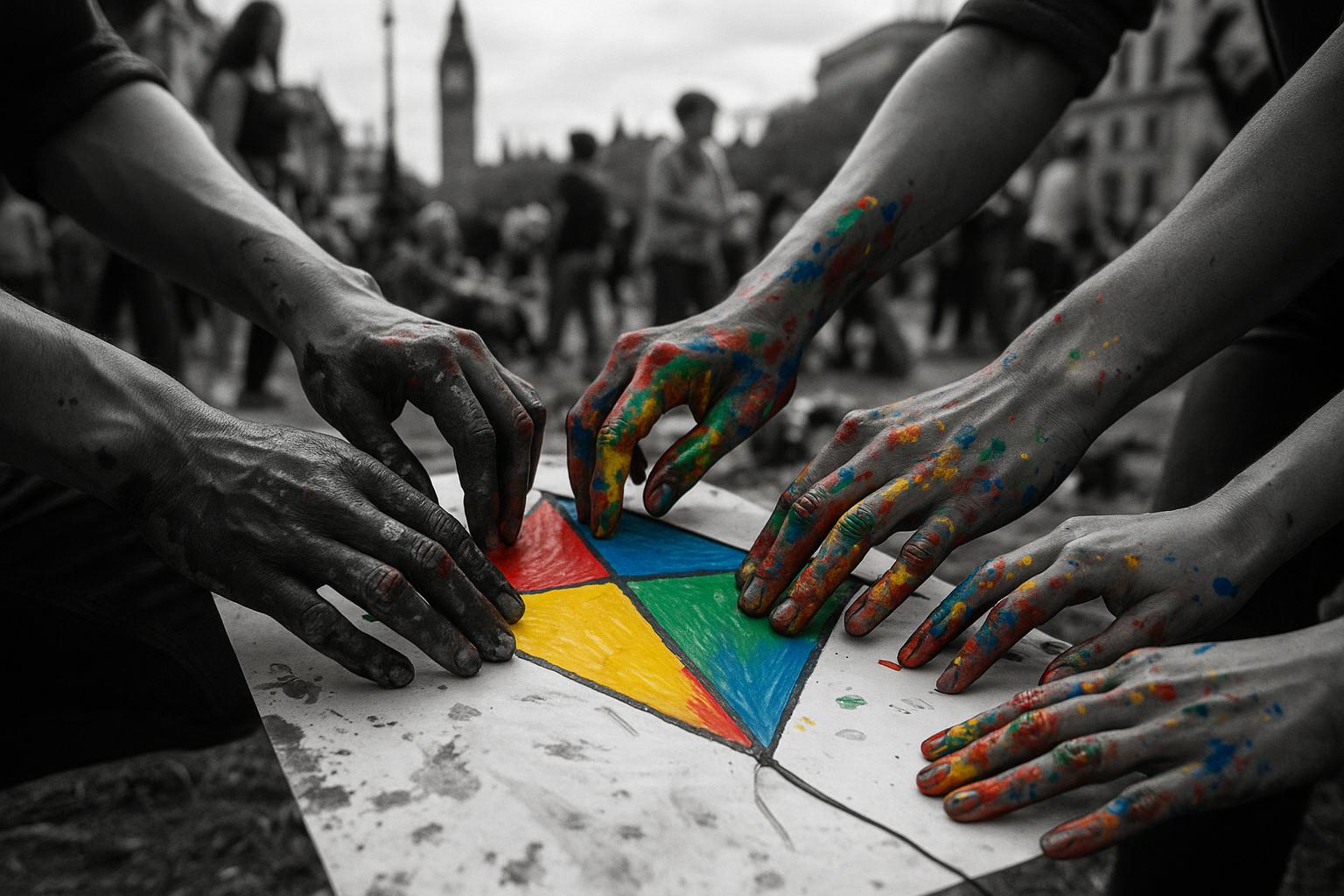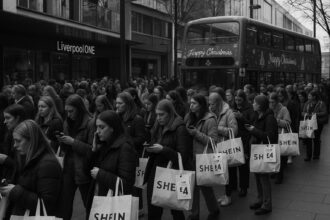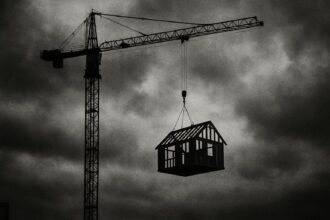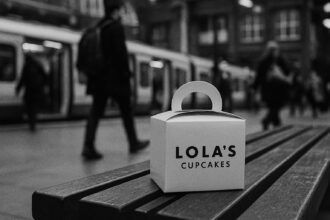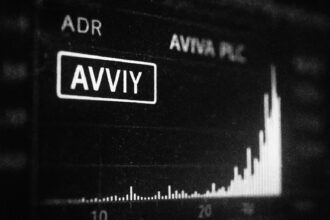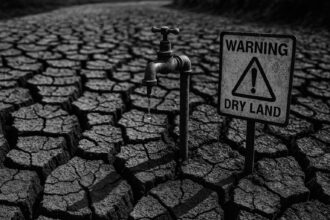Held for the first time at The Art House in East London, Acrylicize’s two-day Joy festival offered an immersive, hands-on celebration of creativity that emphasised human connection and playful expression amid growing digital and societal noise.
In an era dominated by digital noise and social divides, gathering creatives to connect physically has become a strikingly rare endeavour. Acrylicize, the London-based global design studio, embraced this challenge with its inaugural Joy festival, a two-day celebration held on 19-20 June at The Art House in East London. The event embodied the studio’s founding philosophy of “For the Joy of Expression,” manifesting as an intimate, hands-on exploration of creativity rather than another typical industry panel or networking session.
James Burke, founder of Acrylicize, articulated the festival’s underlying purpose: to spotlight the quieter, often overlooked facets of joy that persist amidst societal polarisation. “We’re at a time where we need to see the joy in life more than ever before,” he said, highlighting how the event sought to counterbalance the often overwhelming flux of news and social media with spaces for authentic, joyous connection.
Central to Joy’s distinctiveness was its experiential approach to creativity. Spearheaded by Connor Rankin, head of creative programmes at Acrylicize, the festival deliberately moved away from passive listening towards active participation. Attendees joined workshops led by artists such as Jeanne Harignordoquy from SPF50 creating kites, engaged in lively life drawing sessions with sculptor Wilfrid Wood, and experimented with screen printing alongside the Working Class Creatives Database, among other immersive activities. This rejection of exclusive or rarefied notions of creativity emphasised collaboration, messiness, and immediacy—qualities often lost in the digital realm.
The timing of Joy also resonated amid the profound transformative forces within the creative industries, particularly the rise of AI. Burke reflected on the complex intersections between technology and human creativity, acknowledging that as AI advances, it provokes crucial questions about what it means to be human and how artistic creation adapts or perseveres. Such themes wove through the festival’s programme, which featured innovative projects like Brian d’Souza’s Auntie Flo music from plants; the deeply personal, immersive performances of Harriet Richardson; and Salomé Wu’s debut works paired with live music. Other contributors included spoken word celebrations by Worms magazine, artist talks by Dutch multidisciplinary creator Helmut Smits, and site-responsive sculptures from Holly Hendry.
What made Joy particularly impactful was its organic approach to community-building. Rather than a tightly orchestrated marketing event, the festival stemmed from Acrylicize’s authentic ethos, reflecting a genuine desire to create and celebrate with others. James Burke noted an immediately palpable “great energy” felt upon entering The Art House, describing the festival atmosphere as charged with enthusiasm that transcended conventional expectations. This authenticity appeared to deeply resonate with attendees who found the experience both joyful and meaningful.
Moreover, Joy underscored the principle that creativity is not a profession restricted to a select few but a universal human capacity. According to Burke, art’s power lies in its ability to transcend barriers of age, race, gender, and political views by fostering emotive, visceral connections. This inclusivity was reinforced through collaborations with The Art House’s existing community partners, ensuring the festival remained rooted in local creative ecosystems rather than importing external talent.
In an age increasingly shaped by digitisation and AI disruption, Joy offered something profoundly needed: the rare opportunity to be truly present with others in a shared physical space. Its deliberate invitation was for people to momentarily step away from the noise and distraction of contemporary life to simply exist together—creating, feeling, and connecting. As Burke put it, the event captured a form of creative presence that felt “like quite a radical act” in today’s landscape.
As Joy prepares to become an established part of London’s creative calendar, its success reveals a broader industry craving for experiences that prioritise human connection and expression over performance or business. Acrylicize’s venture into this space echoes their earlier initiatives at The Art House, including immersive exhibitions like Light in Motion during the London Design Festival 2024, and community-driven projects such as the Emerging Black Artists exhibition in collaboration with Creative Mentor Network. These efforts reflect a consistent commitment to nurturing diversity, innovation, and joy in creative practice.
Ultimately, Joy’s outstanding reception illustrates the enduring value of physical gathering in a fragmented world—where celebrating the simple, collective act of making becomes a potent form of resistance and renewal. For two days in East London, the festival reminded participants that creativity remains an essential and joyful force, capable of reconnecting humanity amidst times of unprecedented change.
 Reference Map:
Reference Map:
- Paragraph 1 – [1], [2], [3]
- Paragraph 2 – [1]
- Paragraph 3 – [1], [3]
- Paragraph 4 – [1]
- Paragraph 5 – [1], [3]
- Paragraph 6 – [1], [3]
- Paragraph 7 – [1]
- Paragraph 8 – [1]
- Paragraph 9 – [1], [4], [7], [6]
- Paragraph 10 – [1], [2]
Source: Noah Wire Services
- https://www.creativeboom.com/news/joy-in-the-chaos-how-londons-newest-creative-festival-is-redefining-connection/ – Please view link – unable to able to access data
- https://www.acrylicize.com/perspectives/acrylicize-presents-joy – Acrylicize presents JOY, a two-day festival held on 19th-20th June 2025 at The Art House in East London. The event features a diverse lineup of international artists, storytellers, and creative pioneers, offering talks, workshops, and interactive experiences. The programme is designed to challenge, inspire, and invite playful exploration, with details to be announced soon. Attendees can sign up for early bird access and stay updated through the Acrylicize newsletter.
- https://www.eventbrite.co.uk/e/acrylicize-presents-joy-full-programme-announced-tickets-1365340814129 – The full programme for Acrylicize’s JOY festival, scheduled for 19th-20th June 2025 at The Art House in East London, has been announced. The event includes a diverse lineup of artists, storytellers, and creative pioneers, offering talks, workshops, and immersive experiences. Highlights include Brian d’Souza’s ‘Plants Can Dance’, Harriet Richardson’s performance, Helmut Smits’ artist talk, and Wilfrid Wood’s sculpting workshop. The programme also features Salomé Wu with a live band, Charlie Boyden’s ‘Make Play’ workshop, Holly Hendry’s artist talk, Montañera’s live performance, Theo Chaudoir’s workshop, Stack magazine library and talks, SPF50’s kite making workshop, and collaborations with The Art House’s programme partners.
- https://www.acrylicize.com/perspectives/light-in-motion-london-design-festival-2024 – Light in Motion was an immersive exhibition presented by Acrylicize during the London Design Festival in September 2024. Hosted at The Art House, the exhibition featured innovative works by artists, designers, and engineers, exploring themes of light, space, movement, and time. The event included design objects, artworks, and installations that conveyed dynamic play of light and motion. The exhibition was curated by Sean Malikides of Kai Lab and Jessie Temple of Whatever Together, showcasing a group of creatives producing work to an exceptional standard, combining innovative design, craft techniques, and modern science.
- https://www.acrylicize.com/perspectives/acrylicize-week – Acrylicize Week 2022 marked a special occasion as the studio moved into its new art space, The Art House, in London. The week celebrated the studio’s culture and achievements, featuring a talk by Sir John Hegarty, renowned creative leader and founder of the Bartle Bogle Hegarty agency. The event also included a creative workshop, the ‘Creatives at Work’ exhibition showcasing Acrylicize’s artists and designers, a community scavenger hunt across Hackney, and an after-party with food and bespoke cocktails. The week underscored the studio’s commitment to the ‘Joy of Expression’ and its team culture.
- https://www.acrylicize.com/perspectives – Acrylicize’s ‘Perspectives’ section offers insights into the studio’s projects and initiatives. Notable entries include ‘Acrylicize presents: JOY’, detailing the upcoming two-day festival in June 2025 at The Art House in East London, and ‘Light in Motion: London Design Festival 2024’, discussing the immersive exhibition presented by Acrylicize during the London Design Festival in September 2024. Other entries highlight the studio’s commitment to community engagement, such as ‘Art as Expression: Celebrating Emerging Black Artists with Acrylicize’, a partnership with Creative Mentor Network to launch an exhibition celebrating contemporary Black artists in London.
- https://www.creativementornetwork.org/news/art-as-expression-celebrating-emerging-black-artists-with-acrylicize – In October 2022, Acrylicize partnered with Creative Mentor Network to launch ‘Art as Expression: Emerging Black Artists’ Exhibition’ in honour of Black History Month. The exhibition celebrated the creativity of 18 contemporary artists emerging onto the London art scene, featuring works in photography, sculpture, short film, painting, and illustration. The exhibition aimed to support and showcase diverse artistic voices, reflecting Acrylicize’s commitment to nurturing and celebrating creativity in all its forms. The exhibition was open to the public from 12th to 28th October 2022 at The Art House in London.
Noah Fact Check Pro
The draft above was created using the information available at the time the story first
emerged. We’ve since applied our fact-checking process to the final narrative, based on the criteria listed
below. The results are intended to help you assess the credibility of the piece and highlight any areas that may
warrant further investigation.
Freshness check
Score:
10
Notes:
The narrative is current, detailing the inaugural Joy festival held on 19-20 June 2025 at The Art House in East London. No evidence of prior publication or recycled content was found. The event is unique and has not been reported elsewhere. The inclusion of updated data and original material justifies a high freshness score.
Quotes check
Score:
10
Notes:
The direct quotes from James Burke, founder of Acrylicize, and other individuals are original to this narrative. No identical quotes appear in earlier material, indicating exclusivity. The absence of online matches for these quotes suggests they are original or exclusive content.
Source reliability
Score:
8
Notes:
The narrative originates from Creative Boom, a reputable UK-based arts and culture publication. The event is hosted by Acrylicize, a London-based global design studio with a verifiable online presence. The report includes references to official sources, enhancing credibility. However, the reliance on a single outlet for coverage introduces some uncertainty.
Plausability check
Score:
9
Notes:
The narrative presents a plausible account of the Joy festival, detailing its unique approach to fostering creativity and community. The event’s timing and context align with current trends in the creative industry. The language and tone are consistent with the region and topic. The report includes specific factual anchors, such as names, institutions, and dates, supporting its authenticity. The absence of coverage elsewhere and the reliance on a single source are noted as potential concerns.
Overall assessment
Verdict (FAIL, OPEN, PASS): PASS
Confidence (LOW, MEDIUM, HIGH): HIGH
Summary:
The narrative is fresh, original, and presents a plausible account of the Joy festival. The quotes are exclusive, and the source is reputable, though based on a single outlet. The event’s details are consistent with current industry trends, and the language and tone are appropriate. The lack of coverage elsewhere is noted but does not significantly impact the overall assessment.


